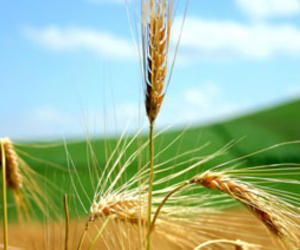Cuba’s First Wheat Harvest Was Modest, Says Official
- Submitted by: manso
- Business and Economy
- 09 / 13 / 2011

2011.09.12 - 16:10:20 / radiorebelde.icrt.cu. CIENFUEGOS, CUBA.- The first harvest of wheat in recent years in the central Cuban province of Cienfuegos was modest, according to a local official of the Agriculture Ministry.
Grain expert Mario Scrubb told Prensa Latina news agency that the Cienfuegos farmers harvested two tons of seeds that will be used to sow some 70 hectare next November and December.
We used our certified seeds from a Brazilian variety, which yield surpasses one ton per hectare, said Scrubb, who is an agronomic engineer.
For the last 150 years Cuban farmers have not had any wheat crops. In 1848 a study on the wheat produced in the black soils of Villa Clara province was published by Antonio Bachiller, then President of the Agriculture Section of the Real Sociedad Patriotica de La Habana (Royal Patriotic Society of Havana).
At that time, Bachiller and others tried to spread the cultivation of wheat to cover Cuba’s consumption in case of the naval blockade against the last Spanish colony in the Americas.
According to Bachiller, Cuba had the right soil, temperature and rainy periods to produce its own wheat from either the local variations of the first seeds introduced in Cuba by the colonizers, or a “bearded” variety introduced from La Mancha, Spain, at that time.
The yield of the Villa Clara variety reached up to 1.2 tons per hectare, according to studies published by Bachiller.
That initiative had a fierce opposition from the flour importers who saw a threat on the domestic production of wheat, and who effectively blocked any initiative on that regard.
In 1991, the Cuban Research Institute in Tropical Agriculture (INIFAT) and the National Institute of Agricultural Sciences (INCA) officially supported the historical studies on wheat production in Cuba.
A year later INIFAT showed the public the first wheat produced in over a century in Cuba and the home-made bread resulting from its flour. The research was published as a book “El trigo en Cuba” (Wheat in Cuba) and was awarded the Special Scientific Result of the Cuban Sciences Academy.(ACN)
Comments